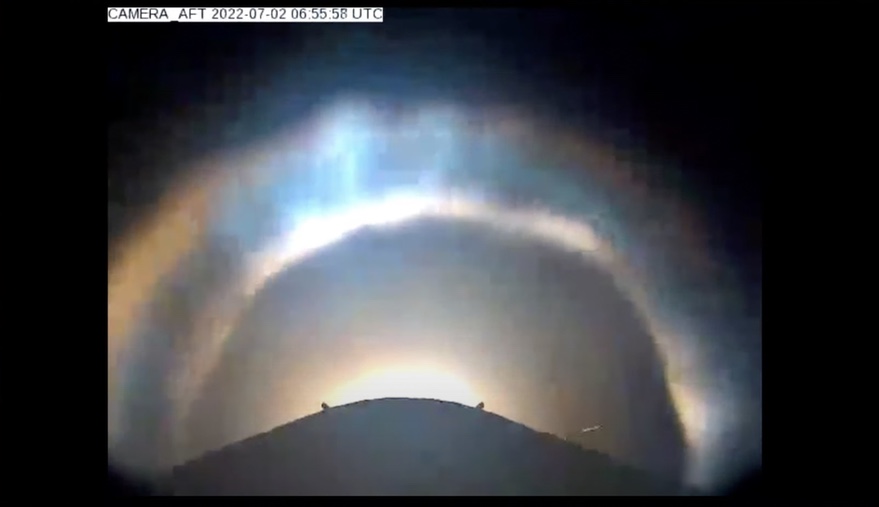WASHINGTON — Virgin Orbit successfully placed a set of payloads for the U.S. Space Force into orbit early July 2 in the company’s first nighttime launch.
Virgin Orbit’s Boeing 747 aircraft, Cosmic Girl, took off from Mojave Air and Space Port in California at 1:49 a.m. Eastern. The aircraft flew to its drop zone over the Pacific Ocean west of San Diego, releasing the LauncherOne rocket at 2:53 a.m. Eastern.
The rocket entered an initial transfer orbit and, after a 45-minute coast, fired its upper stage engine again before deploying its payloads into a 500-kilometer orbit inclined at 45 degrees.
The launch, called “Straight Up” by Virgin Orbit, was performed under a contract with the U.S. Space Force, which designated the mission STP-S28A. The launch was previously scheduled for June 30 but scrubbed about a half-hour before the scheduled takeoff when propellant temperatures were out of acceptable bounds.
The mission carried seven payloads, primarily science and technology demonstrations, arranged by the Space Test Program:
- Compact Total Irradiance Monitor (CTIM) is a 6U cubesat funded by NASA and developed by the University of Colorado Boulder. It will test the ability of a cubesat to measure total solar irradiance, the amount of solar radiation that reaches the Earth, with the same precision as larger spacecraft.
- GPX2 is a 3U cubesat developed by NASA to test the use of commercial components for differential GPS, precision navigation that could be used for future in-space operations. The satellite will deploy a two-meter gravity-gradient boom to passively stabilize itself once in orbit.
- Gunsmoke-L features a pair of 6U cubesats built by Dynetics for the U.S. Army Space and Missile Defense Command. The service describes the satellites as “tactical space support vehicles” that will “aid in all phases of joint force operations.”
- The Modular Intelligence, Surveillance and Reconnaissance B (MISR-B) mission will use cubesats “to demonstrate various capabilities and mission effectiveness” for an unspecified agency.
- Nanosat Atmospheric Chemistry Hyperspectral Observation System (NACHOS) 2 is a 3U cubesat funded by NASA to detect trace gases like sulfur dioxide in the atmosphere. The NACHOS-1 cubesat, with the same instrument, deployed from a Cygnus cargo spacecraft June 28 after that spacecraft departed from the International Space Station.
- Recurve is a cubesat mission developed by the Air Force Research Laboratory. It will test adaptive radio-frequency technology in a mesh network.
- Slingshot 1 is a 12U cubesat built by The Aerospace Corporation using a bus from Blue Canyon Technologies. The spacecraft carries 19 technology demonstration payloads, including a modular plug-and-play interface.
The launch was the fifth orbital launch for Virgin Orbit overall, and the fourth consecutive successful one. All the previous LauncherOne missions took place in daylight, but this one took place at night, Virgin Orbit executives said in a prelaunch briefing, as practice for future missions whose orbits require such launches.
Straight Up was Virgin Orbit’s second mission of the year after a launch in a January. The next launch, expected no sooner than September, will be the company’s first launch from the United Kingdom, flying out of Spaceport Cornwall. That launch is slated to be the first orbital launch by any vehicle from Great Britain.
“The success of the Straight Up mission is another exciting milestone on our way to seeing the first satellite launch from U.K. soil,” said Matthew Archer, director of commercial spaceflight at the U.K. Space Agency, in a statement after observing the launch from Mojave. “We are working closely with Virgin Orbit and it was a privilege to be alongside our partners to witness another successful launch for the team.”
